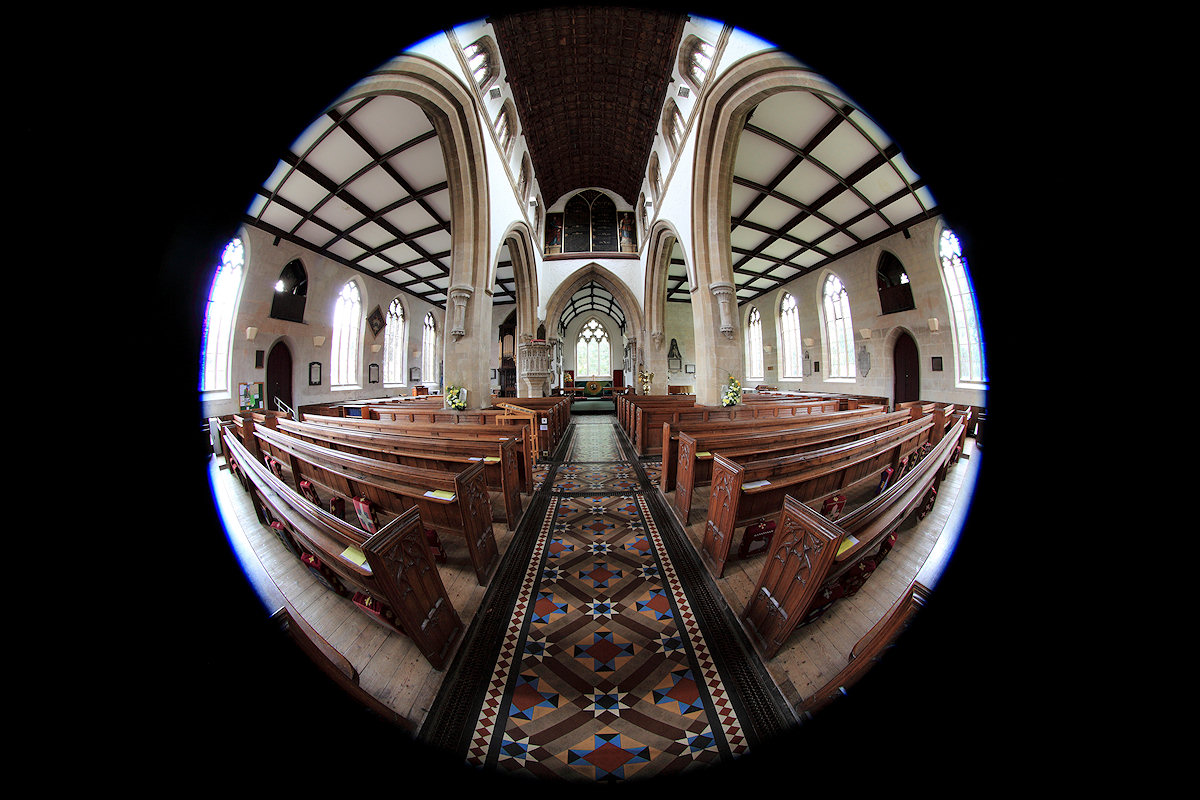Digital Camera World Verdict
On a full-frame Canon camera, the EF 8-15mm Fisheye is a wonderfully versatile lens that enables you to switch between circular and diagonal fisheye effects with a twist of the zoom ring. Image quality is very good in terms of sharpness, contrast and resistance to ghosting and flare, although color fringing can be quite noticeable when using older Canon cameras that don’t offer automatic correction.
Pros
- +
Circular and diagonal fisheye
- +
Very good image quality
- +
Typically strong L-series build
Cons
- -
Color fringing can be noticeable
- -
Expensive for a fisheye
Why you can trust Digital Camera World
The Canon EF 8-15mm f/4L Fisheye USM broke the mold when it was first launched, although Nikon later followed suit with a similar lens. Previously, you had to choose between two types of fisheye lens. A circular fisheye produces a circular image that only covers the central portion of the sensor, the remainder of the frame being black. The other option is a diagonal fisheye, which produces a larger image that covers the whole sensor, resulting in a more typical, full-sized rectangular picture. The neat thing about the Canon 8-15mm fisheye zoom is that it produces a circular fisheye image at 8mm, stretching to a diagonal fisheye image at 15mm. Essentially, you get two lenses in one.
Specifications
Mount: Canon EF
Full frame: Yes
Autofocus: Yes
Stabilization: No
Lens construction: 14 elements in 11 groups
Angle of view: 180-175.5 degrees
Diaphragm blades: 7
Minimum aperture: f/22
Minimum focusing distance: 0.15m
Maximum magnification ratio: 0.34x
Filter size: Rear gel filter
Dimensions: 79x83mm
Weight: 540g
Key features
As an L-series (Luxury) lens, the EF 8-15mm boasts fully professional, robust build quality. Features include a constant f/4 maximum aperture that's available throughout the zoom range, environmental seals to guard against moisture and dust, and fluorine coatings on the front and rear elements to enable easy cleaning. That's a bonus because the protruding, dome shaped front element is very exposed to the elements and the supplied lens hood can only be used at 15mm otherwise it cuts into the corners of the image.
Ring-type USM (Ultrasonic motor) autofocus is super-fast and whisper-quiet, complete with full-time manual override. Measuring 78.5x83mm and weighing 540g, it's rather larger and heavier than Canon's now obsolete 15mm fisheye prime lens but still easily manageable.
Performance
In our tests, sharpness proved very impressive, especially between f/5.6 and f/11. The lens is also remarkably resistant to ghosting and flare, helped by the use of Canon's SWC (SubWavelength structure Coating). That's good news because you often capture a vast expanse of bright sky when using a fisheye lens outdoors. As with other fisheye lenses, we often got a blue edge around the circumference of the image in circular fisheye mode, but it's quite easy to apply a circular crop in Photoshop to fix this. Color fringing around high-contrast edges can be quite noticeable but in-camera correction is available in current and recent Canon cameras.
Sample images


Lab results
We usually run a range of lab tests under controlled conditions, using the Imatest Master testing suite. Photos of test charts are taken across the range of apertures and zooms (where available), then analyzed for sharpness, distortion and chromatic aberrations.
However, due to the relatively small size of test charts and the enormous 180-degree viewing angle of fisheye lenses, it’s impossible for us to generate meaningful lab-test data for them.
Verdict
On a full-frame Canon camera, the EF 8-15mm Fisheye is a wonderfully versatile lens that enables you to switch between circular and diagonal fisheye effects with a twist of the zoom ring. Image quality is very good in terms of sharpness, contrast and resistance to ghosting and flare, although color fringing can be quite noticeable when using older Canon cameras that don’t offer automatic correction.
Read more:
• Best camera lenses to get
• Best Canon lenses
• Best Nikon lenses
• Best Sony lenses
Matthew Richards is a photographer and journalist who has spent years using and reviewing all manner of photo gear. He is Digital Camera World's principal lens reviewer – and has tested more primes and zooms than most people have had hot dinners!
His expertise with equipment doesn’t end there, though. He is also an encyclopedia when it comes to all manner of cameras, camera holsters and bags, flashguns, tripods and heads, printers, papers and inks, and just about anything imaging-related.
In an earlier life he was a broadcast engineer at the BBC, as well as a former editor of PC Guide.


